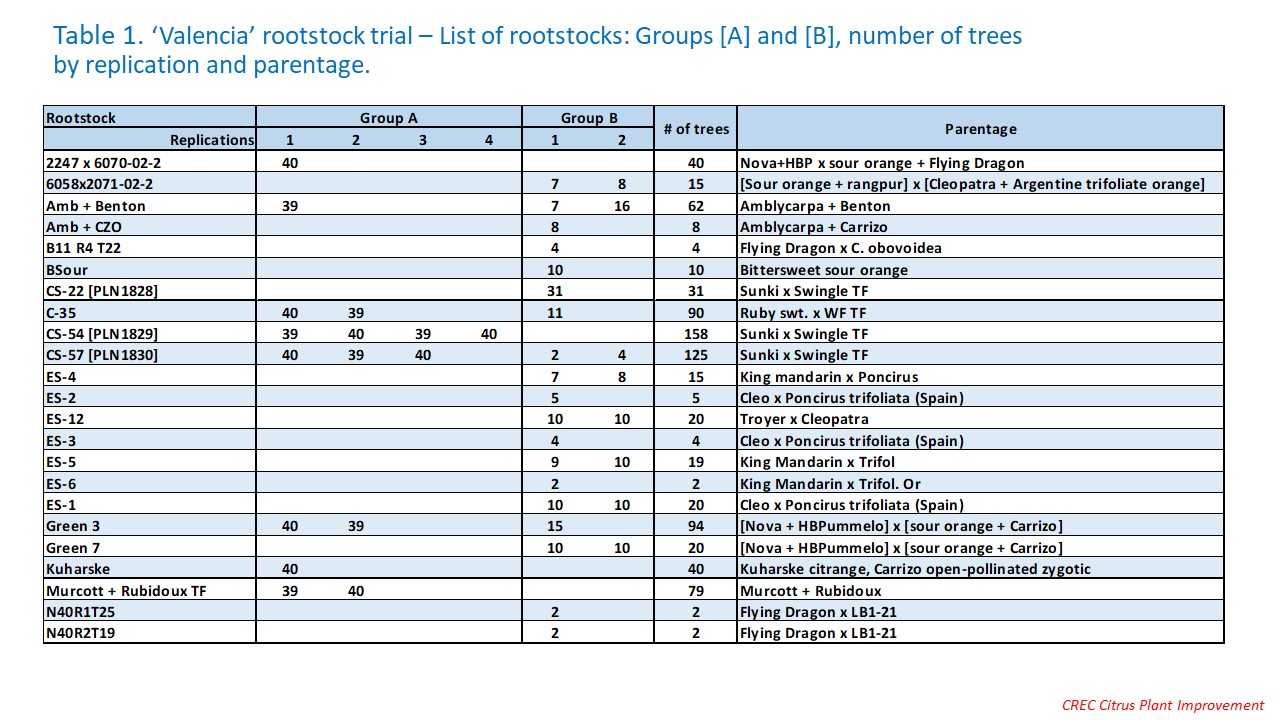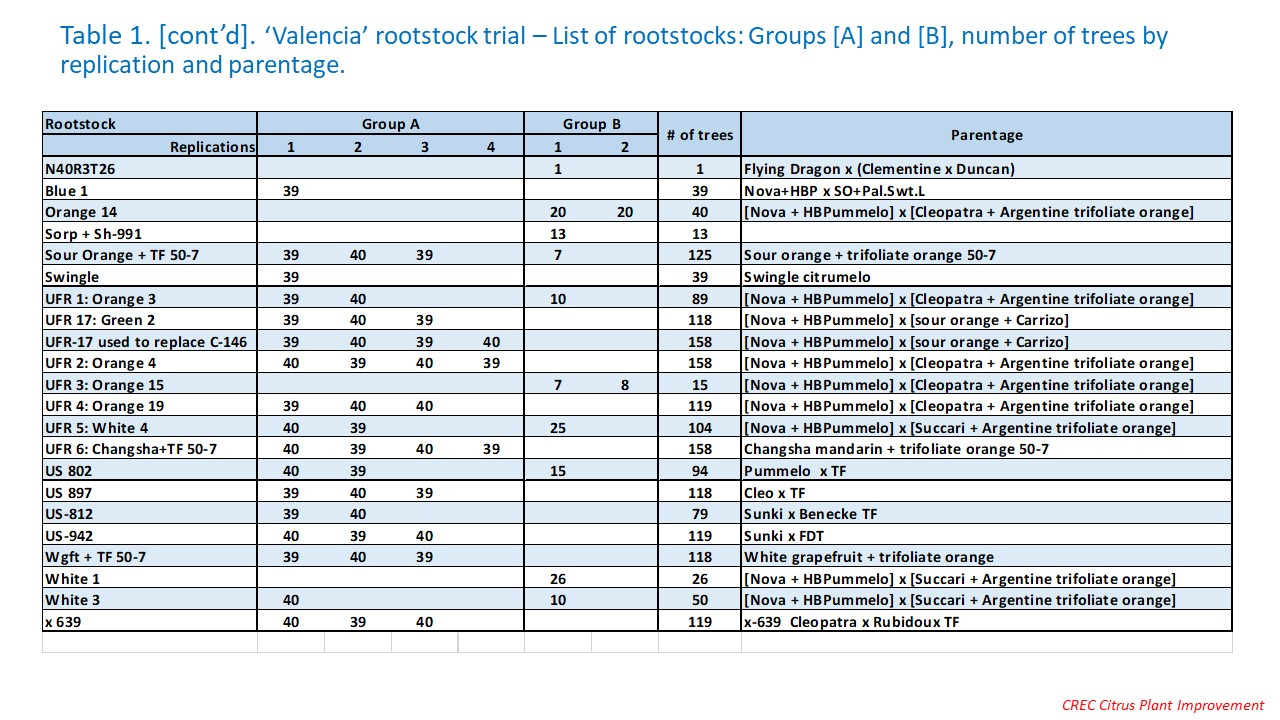'Valencia' Rootstock Trial, Fort Meade
Dr. Bill Castle – Dr. Fred Gmitter – Dr. Jude Grosser
March 17, 2022 - updated
December 06, 2021 - updated
October 26, 2020 – updated
November 27, 2019 - revised
December 7, 2018 - posted
CREC Citrus Plant Improvement
‘Valencia’ Rootstock Trial, Fort Meade* - Description
This trial was planted in 2017 near Ft. Meade. It consists of 2764 ‘Valencia’ trees on 44 new rootstocks (mostly diploids and tetraploids) from the UF/CREC breeding program but also includes the California C-Series and best hybrids from the Forner breeding program (Spain) and 4 commercial rootstocks (Swingle, Kuharske, US-812 and US-942). Each rootstock is planted in solid ½ rows of 39 or 40 trees and replicated. The objective of this trial is to identify superior rootstocks for use with sweet orange on the Ridge along with observing HLB responses.
* The investigators and cooperator gratefully acknowledge the gift of trees provided by Lykes.
‘Valencia’ Rootstock Trial, Fort Meade – Summary
- Location: Fort Meade, Polk County
- Scions - Rootstocks:
- Valencia - 44 rootstocks
- Date Planted: May 2017
- Design: Randomized complete-block. There are two groups of rootstocks: [A] Those in sufficient number to plant mostly 2-4 plots of ca. 39 or 40 trees each and used for statistical analyses; and [B] Those with only enough trees to plant 1-2 smaller-sized plots. Rootstocks [A] and [B] can be distinguished from each other by noting the total number of trees evaluated [Table 1].
- Plot size: 39 or 40 trees
- Spacing: 8 x 18 ft. = 303 trees/acre
- Data
- 2018/19: Tree height rating, HLB rating.
- 2019/20: HLB rating and yield [boxes/tree].
- 2020/21: HLB rating; yield [boxes/tree] and tree height.
- 2021/22: HLB rating
- 2021/22: Juice quality
- Trial status: ACTIVE
‘Valencia’ Rootstock Trial, Fort Meade – Interpretive Summary as of April 2021:
This trial was planted in 2017. The design is based on the number of trees available. Group A rootstocks were planted in a proper replicated trial as were those in Group B, but plot sizes and the number of reps were smaller in the latter group.
The trees are 4 years old. Insufficient data have been collected so far to offer any reliable observations.



.jpg)